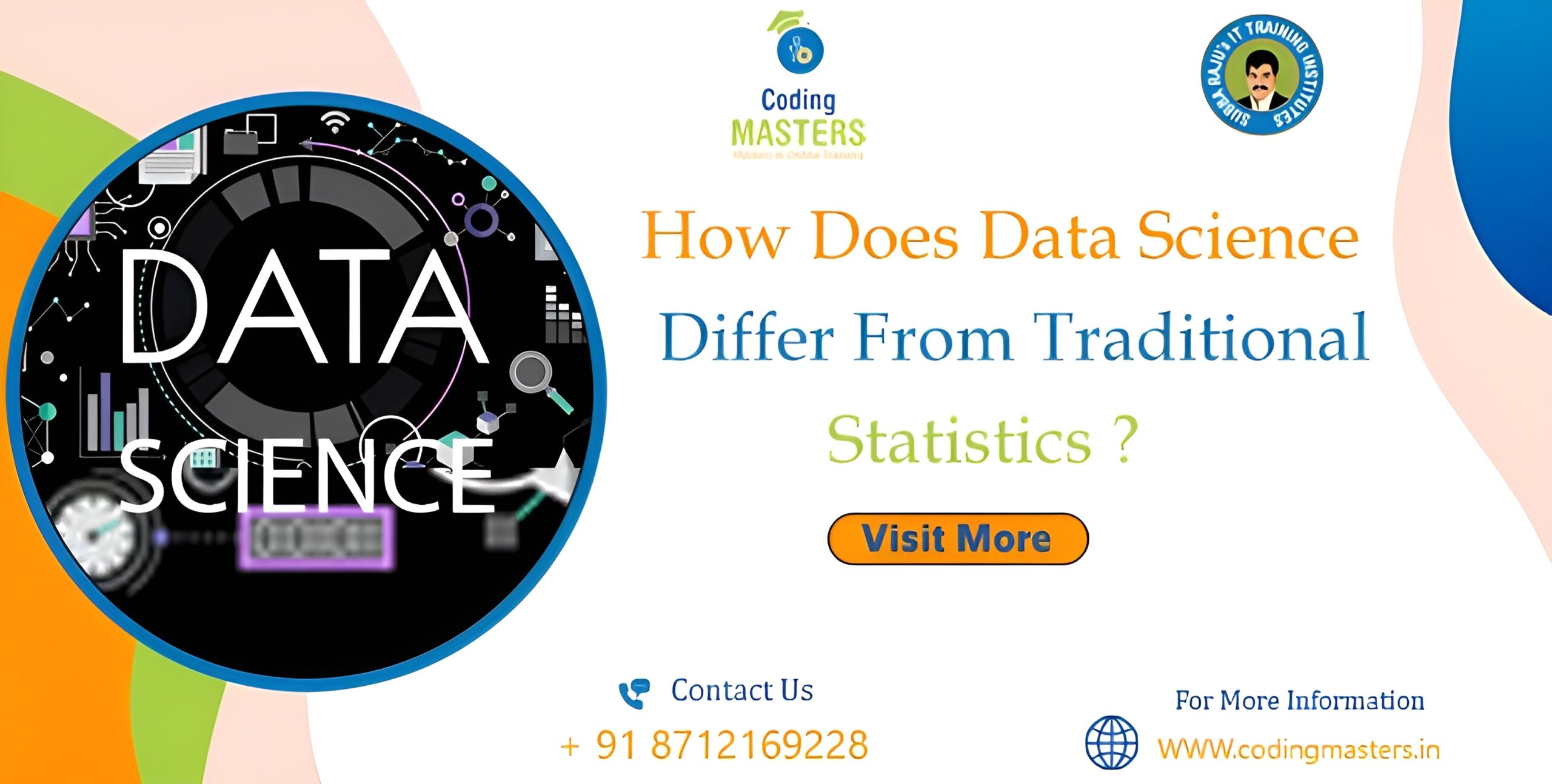How Does Data Science Differ From Traditional Statistics?

Data science and traditional statistics are related disciplines but differ in several key aspects:
- Scope and Goals:
- Data Science: Focuses on extracting insights, patterns, and knowledge from large and complex data sets using a combination of statistical methods, machine learning algorithms, and domain knowledge. It aims to generate actionable insights and predictions to support decision-making processes.
- Traditional Statistics: Primarily concerned with summarizing and analyzing data to make inferences about populations based on sample data. It often focuses on hypothesis testing, estimation, and modeling using statistical techniques such as t-tests, ANOVA, regression analysis, etc.
- Data Types:
- Data Science: Deals with structured and unstructured data, including text, images, videos, and sensor data. It often involves handling big data and data from diverse sources like social media, IoT devices, etc.
- Traditional Statistics: Typically deals with structured data sets, often assuming a well-defined data format and data collection process.
- Tools and Techniques:
- Data Science: Utilizes a wide range of tools and techniques, including programming languages like Python, and R, and tools/frameworks for data manipulation (e.g., pandas), visualization (e.g., Matplotlib, seaborn), machine learning (e.g., sci-kit-learn, TensorFlow, PyTorch), and big data processing (e.g., Hadoop, Spark).
- Traditional Statistics: Relies more on statistical software such as SPSS, SAS, or Excel, along with statistical methods like regression analysis, hypothesis testing, correlation analysis, etc.
- Focus on Prediction:
- Data Science: Emphasizes predictive modeling and machine learning algorithms to forecast future trends, make recommendations, or detect patterns in data.
- Traditional Statistics: Primarily focuses on understanding relationships between variables, making inferences about populations, and testing hypotheses based on statistical models.
- Interdisciplinary Nature:
- Data Science: Integrates elements of computer science, mathematics, statistics, domain expertise, and data engineering to solve complex problems and extract insights from data.
- Traditional Statistics: While interdisciplinary to some extent, traditional statistics is more rooted in statistical theory and methods.
Summary: Data science extends beyond traditional statistics by incorporating a broader range of data types, utilizing advanced computational tools and machine learning techniques, and focusing on generating actionable insights and predictions from data.




